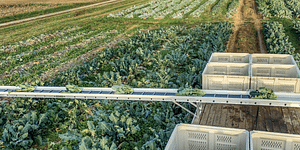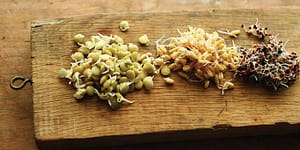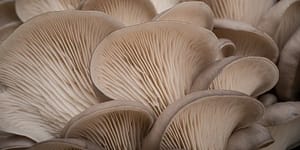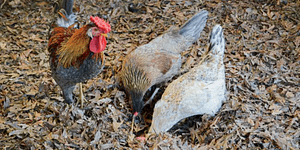Keeping Seeds Organized: Saving & Storing

To achieve a bountiful harvest this growing season, effective seed storage is crucial. Follow these tips for keeping seeds organized so you’re ready to plant as soon as the time is right. Take charge of your garden and set yourself up for success!
The following is an excerpt from The Celestial Garden by Jane Hawley Stevens. It has been adapted for the web.
My first step in the growing season is to take inventory of the seeds I have left over from previous years. A digital spreadsheet works well for this task because you can add new columns or tabs for each new year.
Keeping Seeds Organized
If you store seeds from one year to the next, keep them in a cool, dark place with low humidity. Warmth, light, and humidity can ruin viable seeds. I keep seed packets in a tightly sealed plastic bin in the coolest part of a dark basement. I separate them into groups: herbs, vegetables, root crops, and flowers.
Because I have been saving my own seeds for many years, I find it worthwhile to buy 2 × 4-inch (5 × 10 cm) manila envelopes to store them in. Being one of the ultimate recyclers, it took me a long time to give up my penchant to store seeds in any random envelope at hand, but the uniformly sized packets are much tidier and easier to organize.
Once I’ve reviewed my inventory and made a list of what I need to buy, I order seeds as soon after January first as I can, to ensure my favorites will still be in stock.
Seed-Starting Supplies
It’s a good idea to gather your seed-starting supplies in advance. You will need:
- seeds
- shallow flats/trays and 2- to 4-inch (5–10 cm) pots
- covers such as a clear plastic dome or plastic bag to hold in humidity over the tray
- watering can or hose end with mist/breaker nozzle
- vermiculite or other light soil medium labels (a good trick is to cut Venetian blinds into appropriate sizes)
Generally speaking, you’ll want to be ready to start seeds six to eight weeks before outdoor planting time. Here in Zone 4, I start the earliest seeds around Valentine’s Day. These are crops that take longer to germinate and grow, as well as those that can be transplanted outdoors very early when it still may freeze or frost. Plants in this category are perennials, parsley, and onions.
Crucifers, like broccoli and cabbage, can be sown a couple of weeks later, about March first. When I calculate seed-starting times and expected transplanting dates, I factor in a period of hardening off before transplanting, as I explain later in this chapter.
Since I mainly grow transplants for my own use, not for sale in nurseries, I do not need to produce showy transplants; I concentrate on producing sturdy plants!
Recommended Reads
Recent Articles
Oxeye daisies are one of the most important plants for pollinators including beetles, ants, and moths that use oxeye daisies as a source of pollen and nectar. Instead of thinking about removing a plant like oxeye daisy, consider how you can improve the fertility and diversity of habitat resources in your home landscape, garden, or…
Read MoreSo you want to start reaping your harvest, but you’re not sure where to start? Learn how to break down the options of harvesting tools!
Read MoreWhat’s so great about oyster mushrooms? First, you can add them to the list of foods that can be grown indoors! They are tasty, easy to grow, multiply fast, and they love a variety of substrates, making oyster mushrooms the premium choice. The following is an excerpt from Fresh Food from Small Spaces by R. J.…
Read MoreEver heard the phrase, “always follow your nose?” As it turns out, this is a good rule of thumb when it comes to chicken manure. Composting chicken manure in deep litter helps build better chicken health, reduce labor, and retain most of the nutrients for your garden. The following is an excerpt from The Small-Scale Poultry…
Read More







